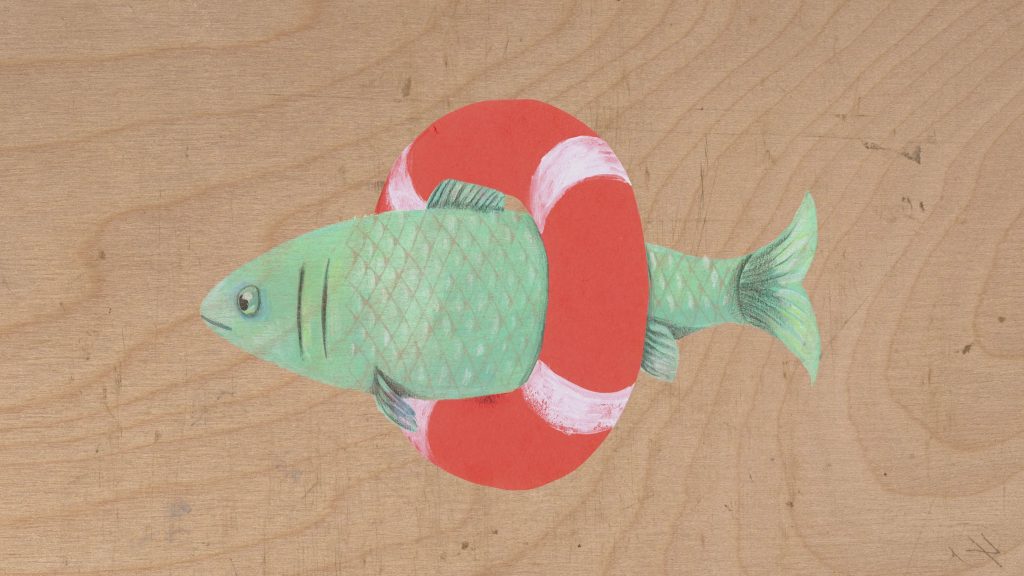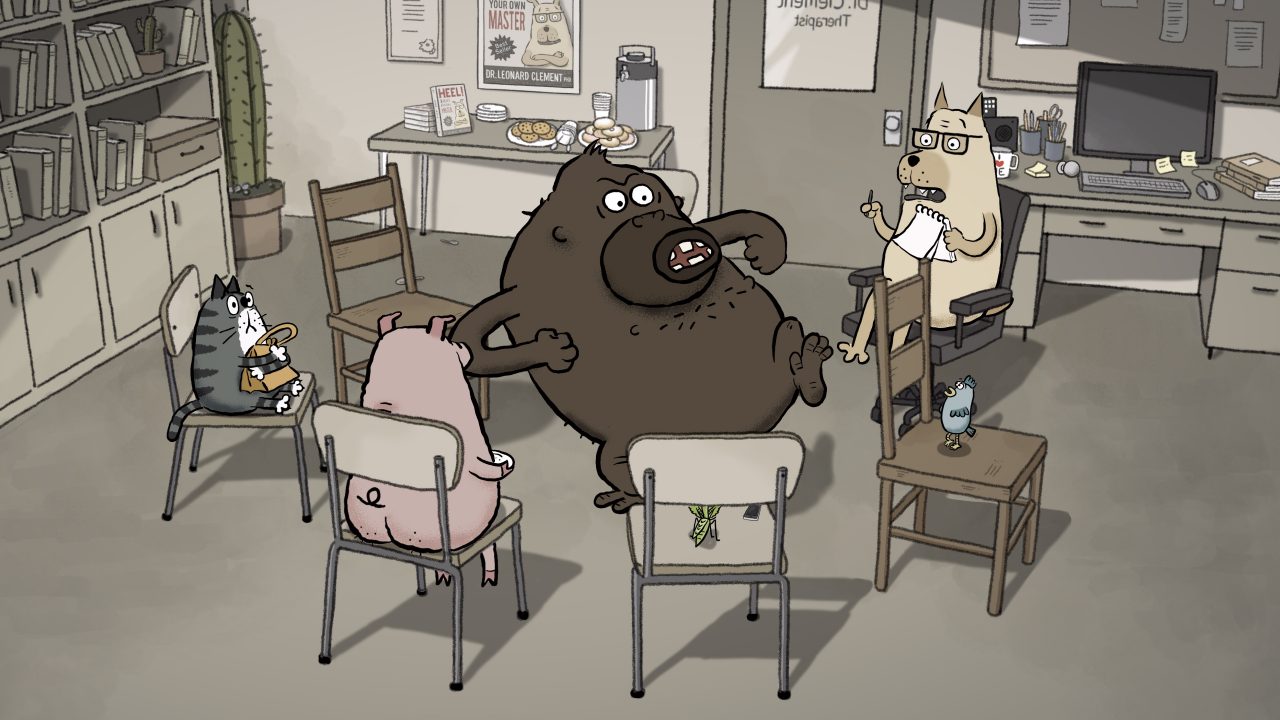
Mini-Lesson for The Great Malaise
Mini-Lesson for The Great Malaise
Mini-Lesson for The Great Malaise
School Subjects:
- Identity
- Relationships
- Human Growth and Development
- Mental Health
Ages: 15-17
The Great Malaise, Catherine Lepage, provided by the National Film Board of Canada
Keywords/Topics: Identity, Success, Self-Image, Moral Development, Life Values, Self-Esteem
Overarching Question: How do we define success and how does this definition impact our lives?
Educational Synopsis: The Great Malaise is an animated short film that follows the journey of a young woman who describes herself and her life in glowing terms. The visual commentary reveals a different story, in which the heavy burden of anxiety is powerfully illustrated by this overachiever’s own definition of success.
Activity 1: What Does Success Look Like?

Students explore what success looks like and means, both in their lives and in the world in which they live.
Before showing the film, which explores the filmmaker’s personal definition of success, use the following questions to help students start to think about what success means in their lives and in society today:
- How do you think success is measured in the media? To what extent do you agree with this portrayal?
- What does “success” mean?
- Can success mean different things to different people?
After watching the film, discuss these questions as a class:
- How does the filmmaker, Catherine Lepage, define success in her own life?
- How did this definition change throughout the film?
- What pressures do you think Lepage was facing?
In the second half of the film, students start to see the role that expectations can play in one’s personal definition of success.
Have students individually reflect on their own ideas of success by completing the values survey below. In each of the two categories, students will rank the items from 1 to 11, with 1 being the most important and 11 being the least important.
School and Work Values
____ High income: making more than the national average income
____ Prestige: having people look up to you
____ Independence: being able to plan your own work and schedule
____ Helping others: being able to help people
____ Security: fitting in with the crowd
____ Variety: doing a lot of different things at school and at work
____ Leadership: setting the pace for your peers or co-workers; contributing to school/work leadership, mentoring, etc.
____ Leisure: having a lot of time left after work or school to do other things
____ Creativity: being able to come up with new ideas or artistic creations
____ Detail: having tasks with exact specifications that require careful attention to detail
____ Challenge: tackling complex, demanding tasks that involve solving problems
Life Values
____ An exciting life: doing things that involve a lot of action, challenges and stimulation
____ Family: being deeply involved with loved ones
____ A financially prosperous life: having many material possessions
____ Freedom: being independent and making your own decisions
____ Education: engaging in lifelong learning
____ Inner peace: feeling free of inner conflict
____ Prestige: being influential and respected by others
____ Good health: maintaining your physical and mental capacities
____ Friendship: having close companionship
____ Self-respect: believing in yourself and your worth
____ Meaningful work: having a job that has satisfying, worthwhile results
Once they’ve completed the surveys, give students time to review their rankings on their own. Place students in partner groups. Ask them to take turns discussing the following questions:
- What did you rank highest in each category and why?
- What pressures might you face in meeting these expectations?
Are these pressures internal or external?
Go Deeper
Have students popcorn words on paper that they find meaningful. Use these words to help students write their own personal definition of success. These can then be posted around the classroom and celebrated.
Activity 2: My Vision of Success

Filmmaker Catherine Lepage believes that “if art is personal and honest, it can achieve something universal.” Art is a powerful, healing tool of expression. Filmmaking is the art of telling stories through a series of pictures. In this activity, students will utilize the power of visualization to illustrate their ideas and the pressures surrounding success. Play the film once more. Ask the following questions:
- Why do you think the filmmaker chose the medium of animation to illustrate her life?
- What types of images did she use to portray the feeling of success?
- What types of images did she use to indicate the feelings of burden and pressure?
Distribute the printable film-reel sheet below to students.
Draw three images that represent your vision of success.
IN MY LIFE, SUCCESS LOOKS LIKE:

Draw three images that represent your vision of success.
THE EXPECTATIONS OF SUCCESS IN MY LIFE LOOK LIKE:

Go Deeper
Use a film-reel sheet to draw three images of success that you see represented in the world around you. This could be in your community or within the media. Once finished, share with a partner and discuss.
Activity 3

In this activity, students are asked to evaluate the areas of importance in their life. Ask the following questions before starting this activity:
- Brainstorm as a class: What are the most important areas of your life?
- If you discounted the expectations of your family, peers and society, what would be the three most important areas of your life?
Have students complete the following activity individually.
- Distribute the tree of life template.
- Have students write their identified areas of importance on their own paper. Some suggested areas are: spirituality, health, career, finances, family, friends, fun/social activities, community, and physical environment.
- Students divide the tree up, creating a separate section (or “slice”) for each area of importance they identify.
- Have students choose the number of rings of life on the tree they want to devote to each of these areas. There are 10 rings in total. Students may wish to trace these rings in different colours or colour them in.
- Once they’ve completed the above, have students share their tree of life with a partner and discuss the following take questions:
-
- What are your personal reasons for choosing the top three areas of importance in your life?
- Would you say that these areas of importance are currently rated this way in your life?
- If not, why?
- Is this how you’d like your life to be in the future? If not, how can you change things?
Go Deeper
Do an internet search to explore which habits make for a happy and healthy life. Write down what you are doing well currently and where you can improve.
Resource
Anxiety Canada: Anxiety in Youth
Katherine Kohler is a Learning Designer at the University of Fraser Valley, a freelance educational content creator, and a part-time media teacher at the North Vancouver District School Board. With a passion for film, creativity and culture, she previously taught Film within the International Baccalaureate program for six years. She enjoys inspiring young filmmakers to follow their passions and create their own path of creativity. A lifelong learner, Katherine has a degree in English from York University, a degree in Education from U.O.I.T., and a diploma in Book and Magazine Publishing from Centennial College. She has just completed a Master of Education in the Contemplative Inquiry Program at Simon Fraser University.
Pour lire cet article en français, cliquez ici.
Discover more Mini-Lessons | Watch educational films on NFB Education | Watch educational playlists on NFB Education | Follow NFB Education on Facebook | Follow NFB Education on Pinterest | Subscribe to the NFB Education Newsletter



